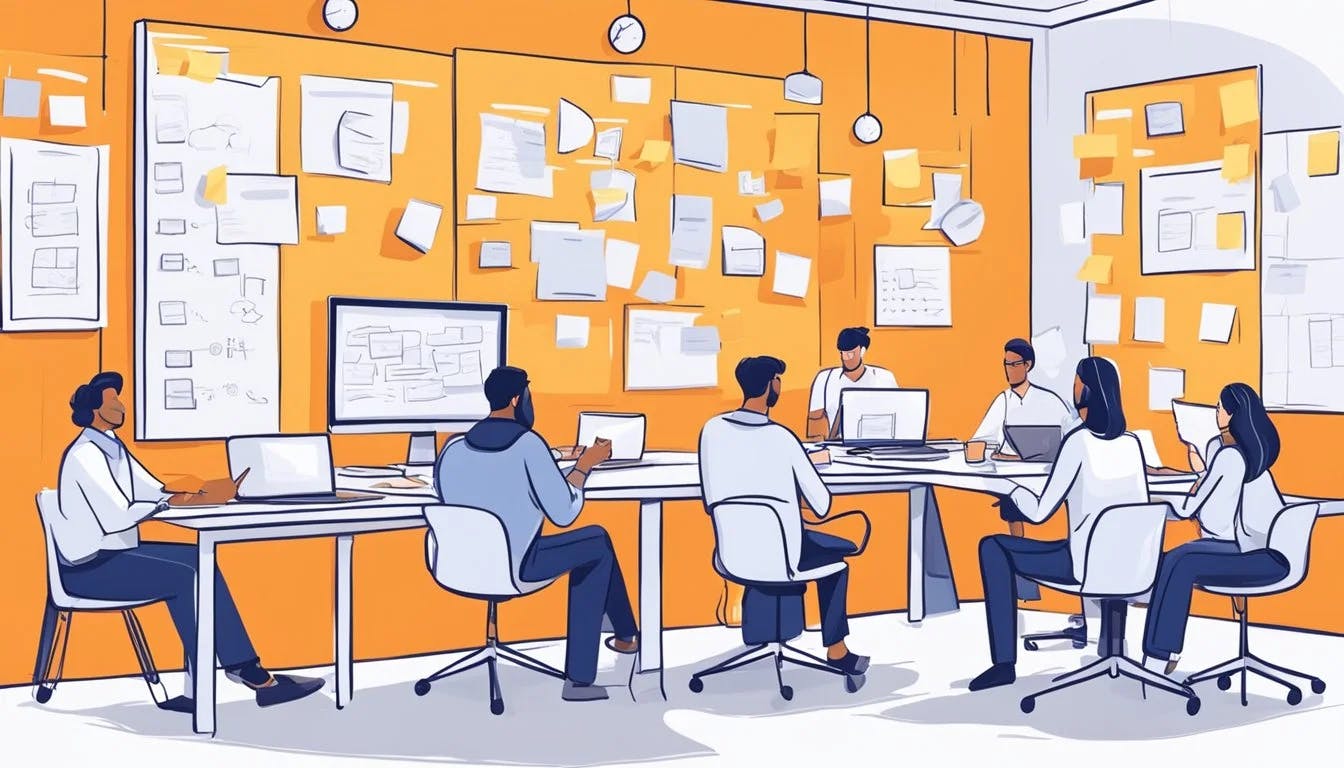Many innovation departments use what we like to call a "digital suggestion box" to collect ideas; they create a web form or company email address for employees to submit ideas at any time. But this approach creates three problems:
Innovation departments don’t always keep employees updated on current company priorities, so employees don’t have a basis for what types of ideas to submit. They usually submit ideas specific to their day-to-day roles that aren’t relevant to company innovation priorities. Or, they don’t submit anything because they don’t know what’s important.
Web forms and survey tools don’t promote collaboration among employees. Typically, the original idea contributor doesn’t get any feedback on their idea after submission. As a result, they can’t work with their colleagues to improve and develop ideas to their full potential. Ideas, of course, are rarely “perfect” at the first submission, so this results in a collection of half-baked ideas.
The “digital suggestion box” is always open, so employees don’t feel a sense of urgency to submit ideas.
After helping organizations implement idea collection processes and solutions over the last decade, we've seen the downsides of this approach, so we developed a better process.
Our process is based on three considerations:
Idea collection: Companies should crowdsource ideation by informing employees about the current goals and challenges the organization is trying to achieve or overcome. Once employees understand company-wide initiatives, they can focus innovative thinking around specific goals.
Collaboration: Not all employees have original ideas on every topic, but they might have feedback about other people’s ideas. Therefore, everyone should be able to see everyone else's ideas and provide constructive criticism. This is crucial to gaining employee engagement and building a culture of innovation.
Implementation: Finally, employees want to see you do something with their contributions (instead of feeling like they’re submitting ideas into the abyss); having transparent and clear idea-to-implementation workflows is important to drive workplace innovation.
In the guide below, we review our tips for how to get innovative ideas from employees — and actually push them forward into implementation. Then, to show these strategies in action, we discuss how our innovation management software, InnovationCast, helped DHL collect 64% more employee ideas in just two years.
If you’d like to see how InnovationCast can do something similar for your company, reach out for a free demo.
1. Inform Employees About Company Initiatives and Priorities
As we mentioned above, the processes innovation managers use to collect ideas from employees matter. It’s a best practice to avoid context-less open calls for any and all ideas because they make it difficult to provide information about your organization's current priorities and the ideas you're trying to collect.
For example, if a healthcare innovation department’s priority for this quarter is to reduce patient churn in their hospitals, it’s unlikely they’ll collect ideas related to this initiative unless they are explicitly educating employees about patient churn problems and asking for ideas to solve these problems.
This is why it's important that stakeholders and innovation managers inform employees about current initiatives, goals, or challenges. This provides employees with a clear understanding of where the company is focused, so they only submit ideas relevant to their current innovation strategy.
Understanding this, we designed InnovationCast with an idea collection feature called Challenges.
Use Challenges to Collect Ideas Relevant to Company-Wide Initiatives
Challenges are time-bound calls for specific ideas. Innovation managers can create a challenge around a problem or initiative they’re currently focusing on. They can then use images, videos, articles, and other resources to provide employees with more information about this problem or initiative.

Innovation teams can also tell employees about failed ideas that they collected in the past, what they are looking for in new ideas, and any common pitfalls that employees need to consider.
Since Challenges are only open for a limited time, employees are urged to submit ideas before they close.
2. Ensure All Open Idea Submissions Are Tied to Current Organizational Goals and Priorities
While using Challenges to collect ideas has advantages, employees should still be able to submit ideas anytime.
However, this doesn’t mean you should use context-less, open calls for ideas. Instead, you should create structured submission forms that prompt employees to explain what topic their idea is related to, what they expect from it, and what value it will bring.
To do this in InnovationCast, we built an “Always On” feature that prompts employees to submit more details about their ideas.
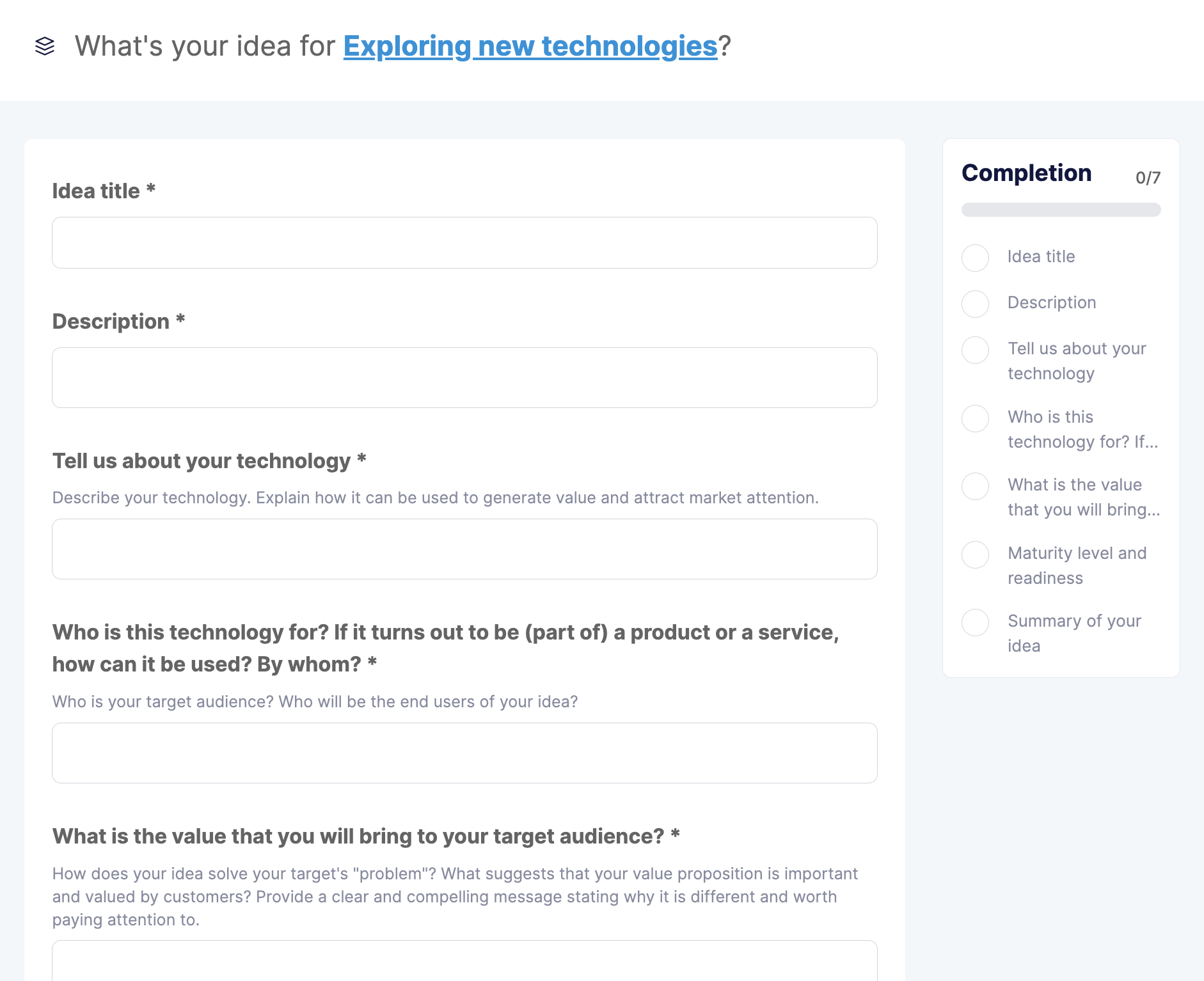
Managers can also establish accepted categories for ideas related to broader organizational goals; if an employee has an idea unrelated to these broader goals, they won’t be able to submit it. This is useful for teams that only want to collect ideas on certain topics.
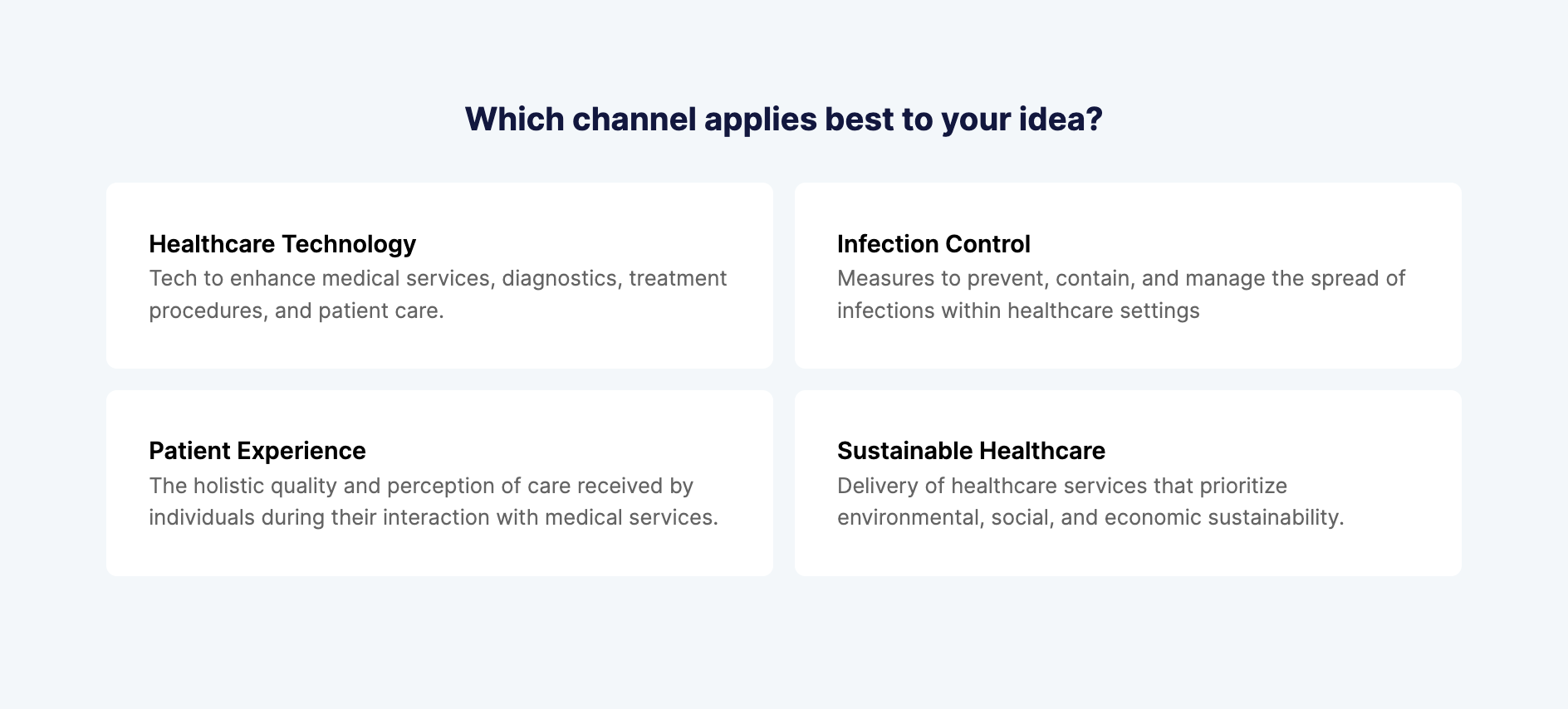
3. Develop Ideas to Their Full Potential by Crowdsourcing Initial Idea Feedback and Assessment
In many organizations, only a handful of innovation managers can view ideas once they are submitted. This restricts the quality and quantity of feedback they can gather because they don't have subject-matter expertise on every topic, nor do they have the time to ask for input from various experts.
This lack of transparency and collaboration prevents innovation managers from using the entire organization's creative thinking to develop ideas to their full potential.
Additionally, this reduces employee engagement in innovation efforts because employees can't see what happened to the ideas they submitted and if they’re actually considered or implemented (more on this in the next tip).
This problem stems, in part, from the systems that innovation departments have in place: they use various spreadsheets, survey tools, and SOPs to manage ideas and push them into implementation. This gets messy and stifles successful innovation because there isn't a single platform where employees and stakeholders can view ideas and provide feedback.
Use a Centralized Platform Where Employees and Stakeholders Can Collaborate
This is why InnovationCast has various collaborative innovation tools. When an employee submits an idea, everyone else can see it on their dashboard, identify potential weaknesses, and suggest how to improve it.

Here’s a look at our core feedback features:
Voting: When an employee submits an idea, their colleagues can vote on their idea by saying if it's "Good," "Not So Good," or whether they are "Undecided." We then prompt employees to provide a reason for their vote, ensuring they give the original contributor useful feedback to improve the idea. Original contributors can reply and work on their ideas with their colleagues.
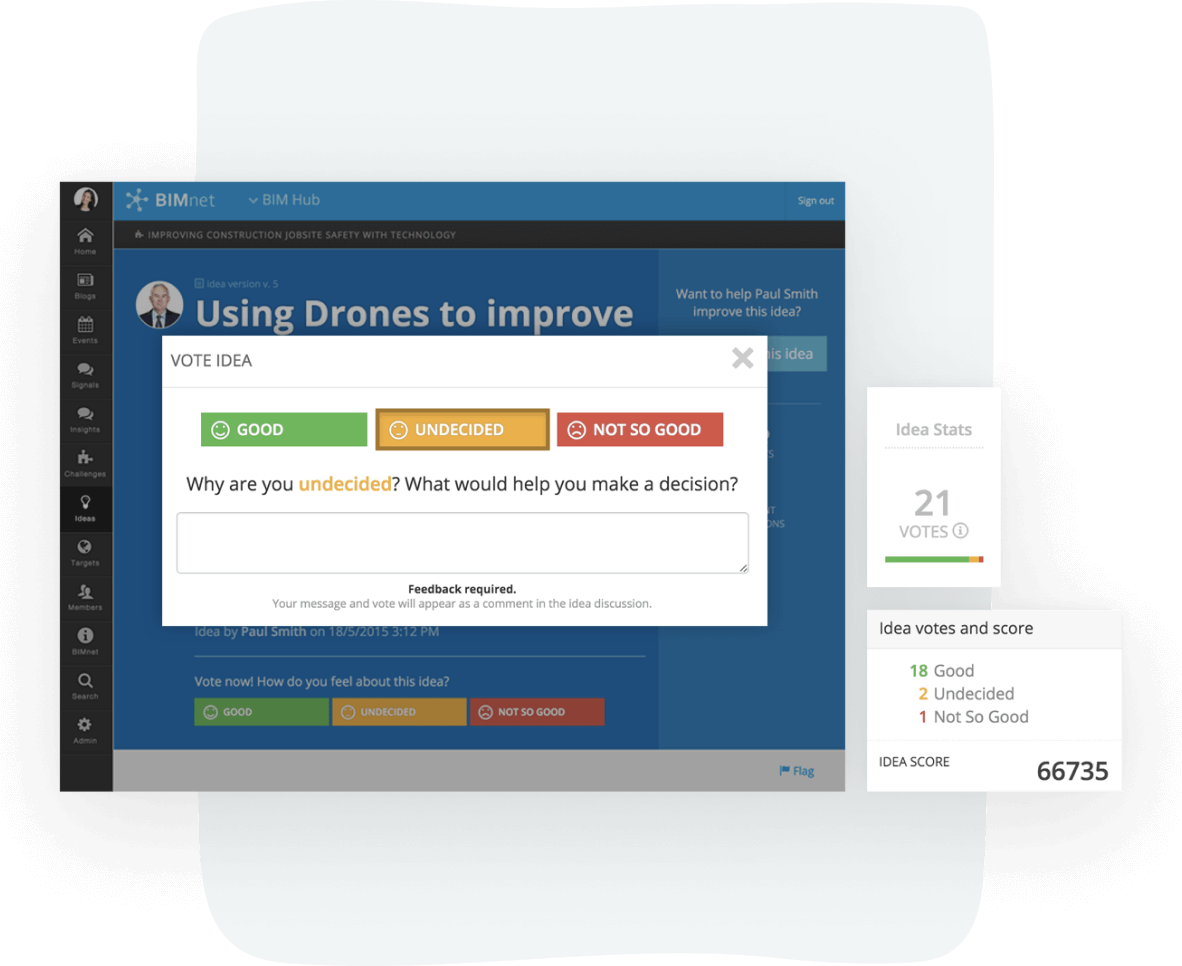
Following and notification features: Employees can follow various ideas and Challenges and get notified about new changes and comments. We found that this increases employee involvement because, although certain employees don’t have original ideas to submit, they can still engage in discussions with their colleagues.
Significant contribution: When the original contributor receives feedback that helped them improve their idea, they can mark this feedback as a “significant contribution.” This gives the commenter public recognition for their suggestion and encourages other employees to get involved.
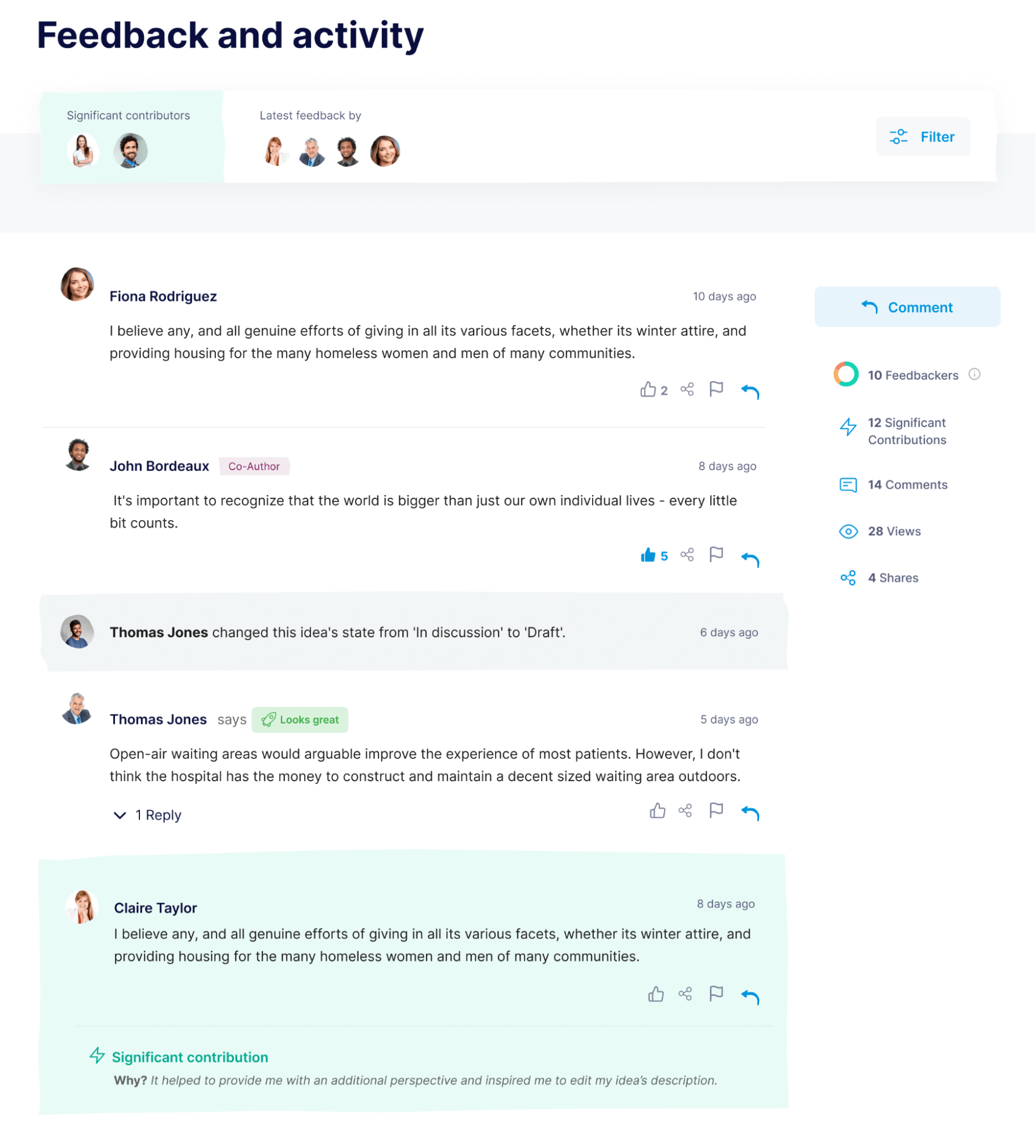
These features turn idea collection from a solitary “black box” type activity to a vibrant community of discussion. We found that just this step alone can transform the efficacy of idea collection in an organization.
4. Give Employees Visibility into the Idea Management and Implementation Process
Researching potential ideas and submitting them requires a significant time investment from employees. When employees can’t see what happens to their ideas after submission, they tend to stop contributing to innovation efforts because they feel “out of the loop” and don’t see the fruits of their labor. If their product idea was good enough to be tested, for example, they might not know about it.
Employees want to feel involved with the improvement and implementation of their ideas — they want to see where their ideas have gone and the impact they’re having on the organization.
We recommend giving them visibility into idea management and implementation to prevent employees from completely dropping out of the idea submission process. This requires a system that supports full transparency.
You can’t give employees transparency into the idea management process if you use a spreadsheet or company email address that only a few innovation managers can access.
Use an “Innovation Hub” to Give Employees Visibility into Idea Management
We designed InnovationCast to allow original idea contributors to view their ideas from the submission stage to the implementation stage. After their idea has been implemented, they can also track the impact their idea has on the organization’s bottom line.
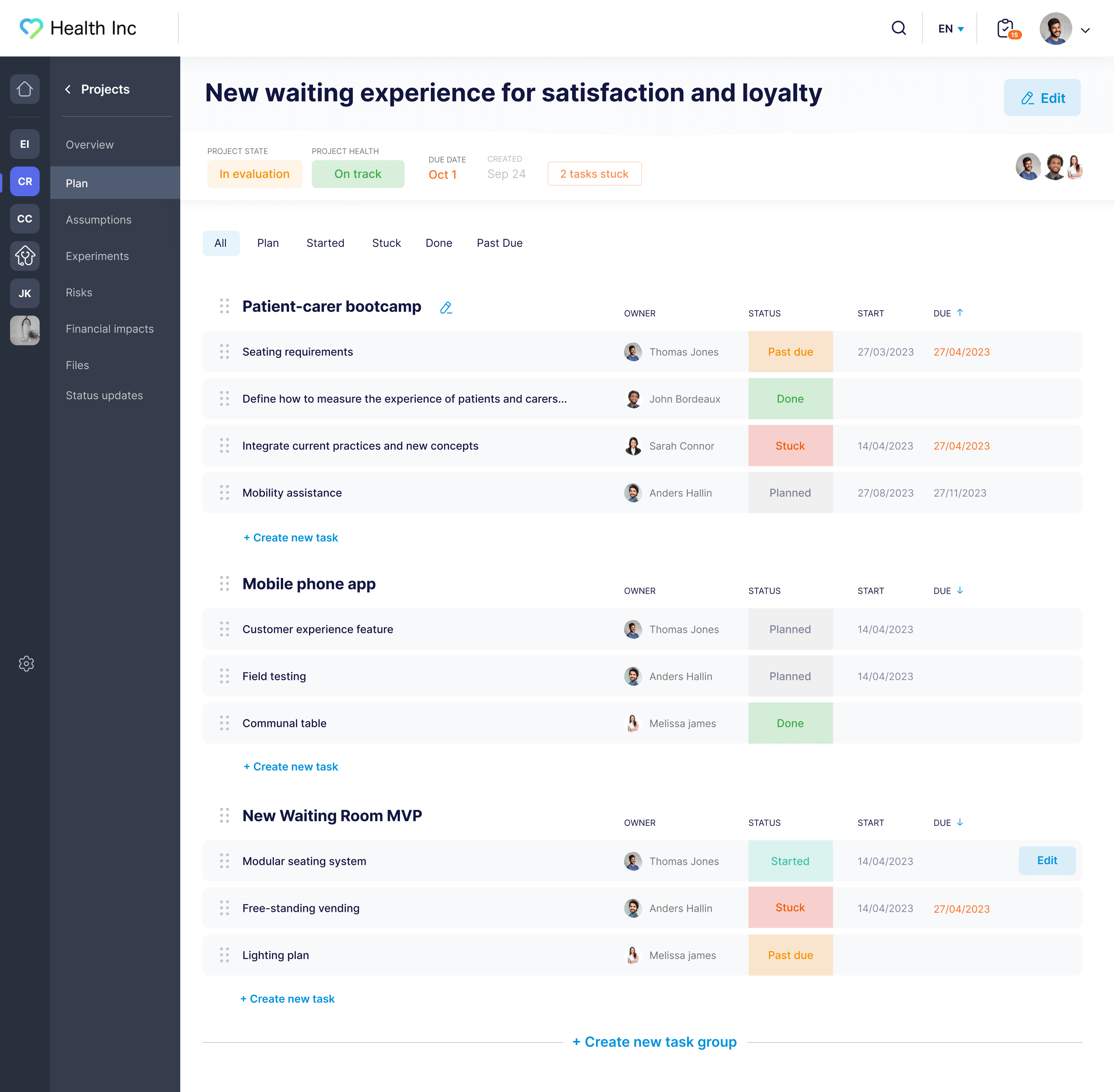
This makes employees feel more involved with idea assessment, validation, and implementation, and provides a sense of unity that’s difficult to replicate with siloed workflows.
Inside the InnovationCast dashboard, staff members can:
View all of the ideas they submitted and where these ideas are in their lifecycle — whether they are in the assessment, testing, or implementation stages.
View the experiments managers have performed to evaluate ideas. For instance, if an employee had an idea to put a nurse in the waiting room of their hospital to reduce patient churn, the employee can track by how much percent their idea is reducing patient churn.
Receive notifications when something happens to their idea, be it a colleague providing feedback, a manager moving it onto the next stage of its lifecycle, or a stakeholder rejecting it.
View a personalized feed that includes not only the ideas they submitted but also updates on ideas they follow and communities they’ve joined.
5. Reward Employees for Submitting Good Ideas and Improving Existing Ones
As we mentioned earlier, employees spend a lot of time researching and submitting innovative ideas. And while giving employees insight into the innovation management process can incentivize them to participate in future brainstorming sessions, rewarding them with badges, prizes, and public recognition is best practice.
Monetary prizes, in particular, can be very effective (if it makes sense for the organization). You could give employees PTO, bonuses, and commissions based on how well their ideas perform. For example, if an employee’s idea significantly increases company profitability, you could offer them a commission from the earnings. These are strong financial incentives for employees to continue submitting ideas.
However, we’ve also seen non-monetary or small monetary recognition work well (recognition at company events, gift cards, or badges and rewards that we mention below).
Use InnovationCast’s Badges and Rewards System
InnovationCast supports these incentives using a badges and rewards system:
You can award badges when employees reach certain milestones; for example, if they’re the first person to respond to a challenge or their feedback is marked as a significant contribution a certain number of times. These badges are visible on the employee’s profile for others to see.
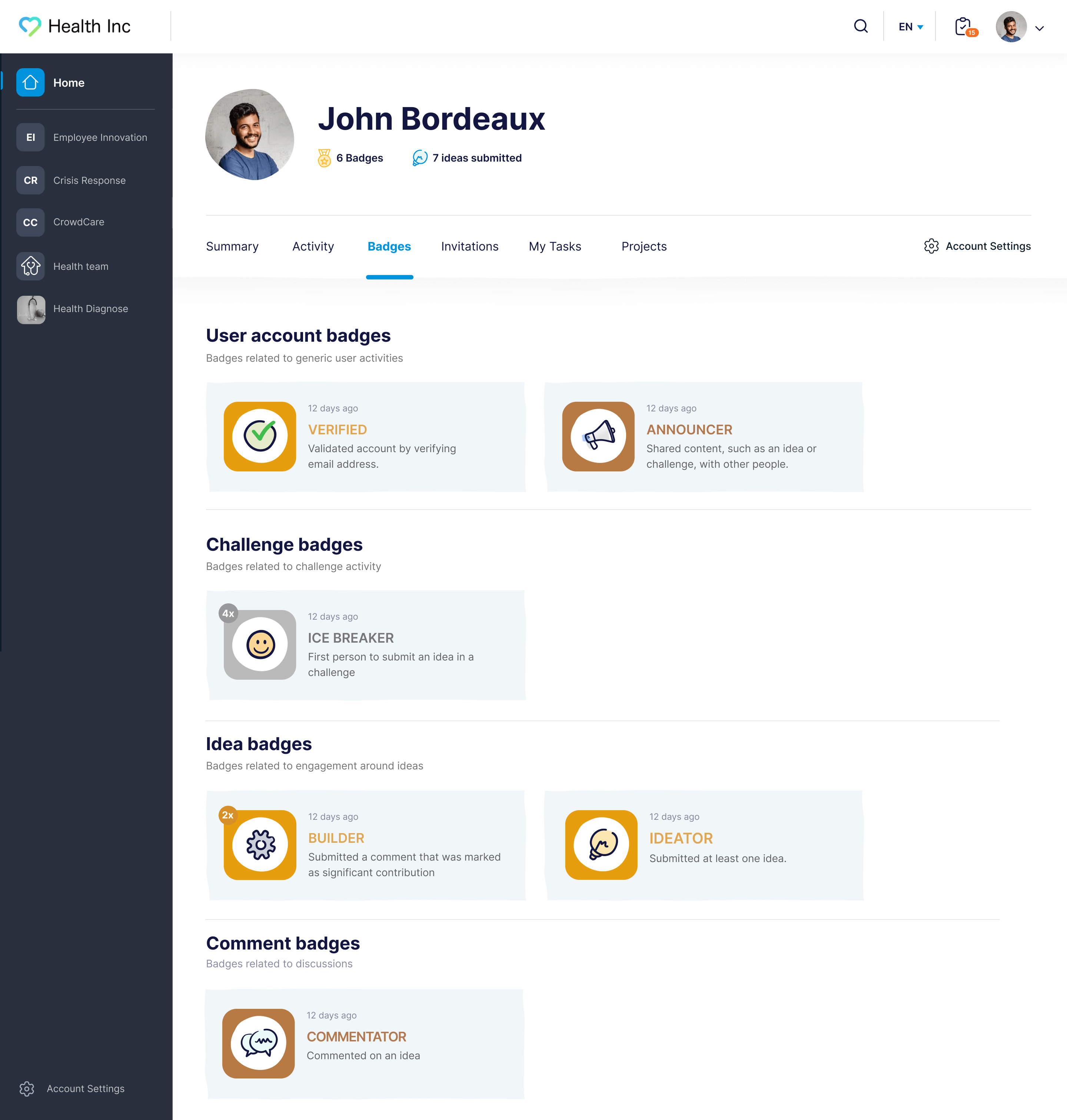
You can also award employees points for quality contributions. When they reach a certain points threshold, they can redeem these points for PTO, a free dinner, gift cards, or any other reward.
6. Encourage Employees to Share the Latest Industry News with One Another
Not everyone within the company will have original ideas; however, many employees keep up to date with industry trends by reading the latest news articles, press releases, and other resources.
Instead of encouraging employees to solely submit creative ideas, employees should also be able to share the latest news with the rest of the organization, as this can facilitate idea generation and problem solving.
For example, if an employee sees that a startup just released a new AI feature, they should be able to share this news with everyone else, so business leaders and employees can discuss the impact and whether it warrants taking any action.
Again, this isn't easy to do in many companies because there isn't a single platform where everybody can log in, share resources, turn them into ideas, and push them into implementation.
This kind of news sharing and innovative thinking is often just done ad hoc, in email threads, messaging apps, or watercooler conversations. Centralizing these conversations exposes them to more employees, and as a result, can get more creative brainpower on these ideas.
To help facilitate this, we designed a feature in InnovationCast called Signals.
Use Signals to Centralize News Sharing
Signals is an open communication feature where employees and stakeholders can share industry news with their peers and fuel company-wide initiatives.
When users log into InnovationCast, they can see these Signals as they scroll through their news feeds. This gives employees another way to share ideas beyond our Challenges and "Always On" features.
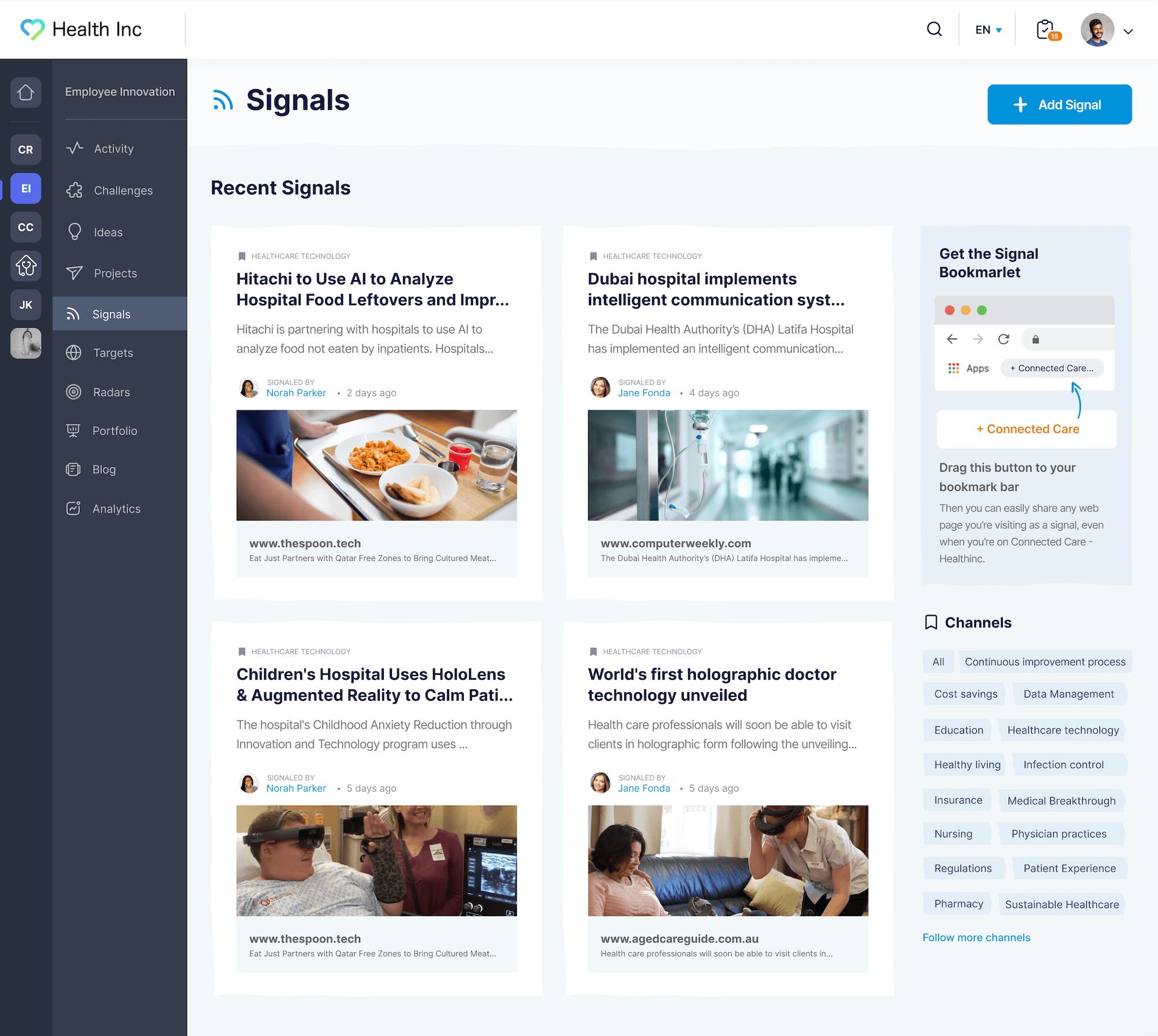
When team members post a signal, InnovationCast prompts them to bucket their resource into a specific category — be it customer retention, social media marketing, or new products — and submit more detail around their signal. This filters out any irrelevant resources and helps employees and stakeholders quickly understand the relevance of a signal before clicking on it.
7. Don’t Just Collect Innovative Ideas; Implement Them
Aside from the visibility piece we talked about above — you have to actually take action on employees' ideas. Test ideas’ feasibility and potential value, and plan projects to bring ideas to life.
Otherwise, ideas (and the organization) sit stagnant. Not only that, employees and other stakeholders will be less inclined to get involved in innovation initiatives down the line.
Even if they can see ideas, get involved in feedback, and share resources, if nothing comes of the effort, there’s not much incentive to continue contributing time to these activities.
In order to do anything with ideas, you need to define clear innovation processes to push different ideas into implementation (new technologies, business models, HR processes).
However, this strays off this topic and is far too much to squeeze here, but you can check out our guide below to learn more about this.
Read more: How to Develop Innovation Processes to Launch New Ideas
How InnovationCast Helped DHL Increase Idea Submissions by 64%
When we started working with DHL, we used the innovative approach mentioned above to increase employee idea submissions by 64% in just two years.
DHL is a logistics company that delivers billions of packages every year. They employ a team of over 500,000 employees to accomplish this, as well as 5,000 IT professionals that ensure all computer systems are working smoothly.
DHL already built successful innovation processes for their 500,000 employees; however, they struggled to involve their 5,000 IT employees in idea submission efforts.
So, DHL partnered with InnovationCast to develop a workplace innovation platform called IdeaHub. After four weeks, DHL launched IdeaHub, and all employees (including the IT team) could submit ideas, share them with colleagues, ask for feedback, and collaborate on developing them.
This innovation platform also supports thorough project management, so innovation teams can put ideas through specific workflows, test whether they are a good fit, and push them into implementation.
In addition to increasing employee idea submissions by 64%, DHL also increased the number of successful business ideas implemented by 14%.
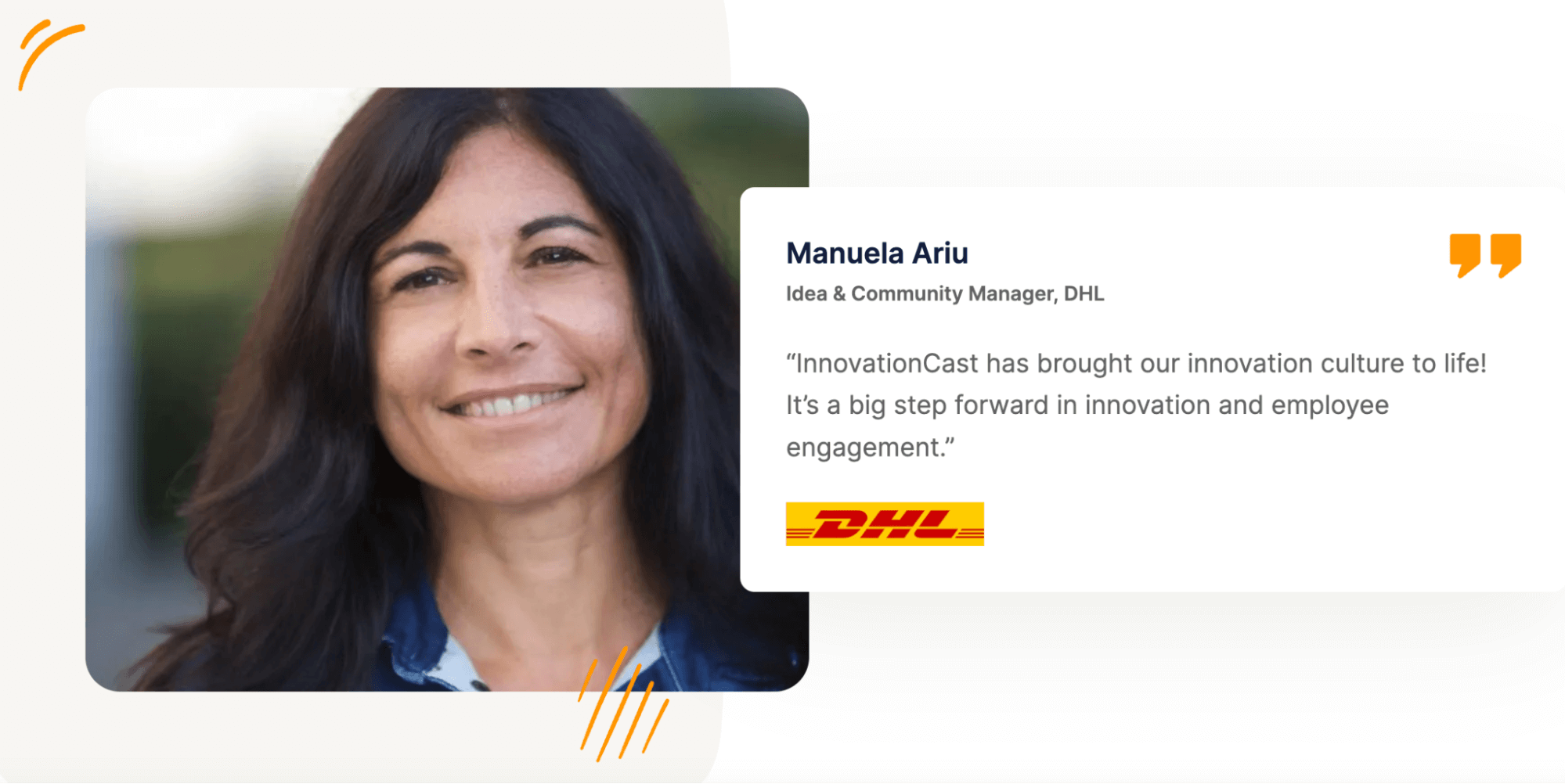
Book a free InnovationCast demo to see how our platform can help you create a company culture of innovation and improve idea collection workflows.
Related reads:
